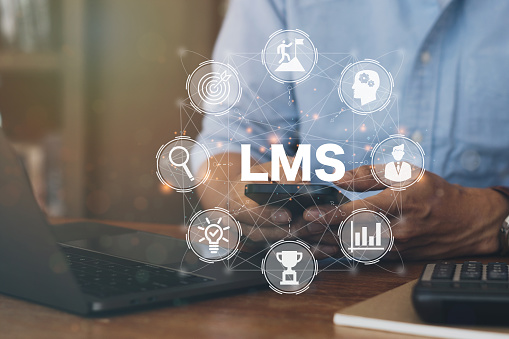6 Proven Strategies For Building a Culture of Continuous Learning in Your Organization Successfully

In today’s fast-paced world, organizations need to be agile, innovative, and adaptable to succeed. To achieve this, they need to cultivate a culture of continuous learning where employees are encouraged, supported, and rewarded for learning and development.
In this post, we will discuss six proven strategies for building a culture of continuous learning in your organization, from leadership buy-in to measuring learning impact.
What is continuous learning?
Continuous, or lifelong, learning is the ongoing pursuit of knowledge. It is voluntary, self-motivated, and can take place in any form—from a degree to a documentary.
Cultivating a continuous learning culture within your organization will reap untold rewards in terms of employee engagement, employee retention, and productivity. People need to be stimulated to grow; otherwise, they stagnate and soon get bored.
So strong is the desire to learn that, in the recent past, 60% of the workforce set out to begin skills training independently from their employers.
This reflects a desire for knowledge that is so strong that our employees will seek it for themselves if it is not provided for them.
Our workforce’s urgent agenda to learn should move our focus to how best to facilitate opportunities to engage our employees in continuous learning.
When they are so keen to learn, should we simply lecture them, or should we provide continuous active learning opportunities?
Continuous active learning engages the learner and requires them to participate in the learning process. This is proven to be an effective type of learning that encourages innovation within the workplace.
Why would organizations want a culture of continuous learning?
Continuous learning is so beneficial to an organization that they should want to develop it as part of their overall organizational culture.
Adoption has been an issue in the past for many organizations, which must be addressed at a cultural level by focusing on the benefits.
That can be the biggest hurdle in the initial implementation. But once continuous learning becomes an accepted part of your organizational culture, it becomes second nature.
Once adopted by the organization, the improvements and better outcomes that stem from the new cultural element reiterate its importance on an ongoing basis.
Related post: Top 10 Reasons Why Your Business Needs to Adopt eLearning
Proven strategies for building a culture of continuous learning in your organization
Building a culture of continuous learning in your organization is essential, here are the strategies to follow
1) Start with leadership buy-in and role modeling
The first strategy for building a culture of continuous learning in your organization is to start with leadership buy-in and role modeling.
Leaders play a crucial role in creating a learning culture by setting the tone, direction, and expectations for learning. When leaders demonstrate a commitment to learning, they inspire and motivate employees to follow suit.
Leaders can demonstrate their commitment to learning in various ways, such as investing in employee training and development, setting learning goals, or sharing their own learning journeys.
For example, a CEO could set a goal of having all employees complete a certain training program, or a manager could share a story of how they overcame a challenge by learning a new skill.
By doing so, leaders not only show their support for learning but also make it more tangible and relatable for employees.
To get leadership buy-in, you need to make a business case for learning that aligns with the organization’s goals and values.
For example, you could highlight how learning can improve performance, innovation, customer satisfaction, or employee engagement.
You could also enlist champions from different levels of the organization who can advocate for learning and share their success stories.
2) Communicate the value and benefits of learning
The second strategy for building a culture of continuous learning in your organization is to communicate the value and benefits of learning.
Many employees may not see the immediate or long-term benefits of learning, especially if they are focused on their daily tasks or goals.
Therefore, it’s essential to communicate the “what’s in it for me” of learning to employees, so they understand how it can benefit them personally and professionally.
There are many ways to communicate the value of learning, such as highlighting success stories, showcasing learning opportunities, or linking learning to performance goals.
For example, you could share stories of employees who have learned new skills or knowledge and applied them to their work, resulting in better outcomes or recognition.
You could also showcase learning opportunities through internal newsletters, social media, or learning portals. You could link learning to performance goals by aligning learning objectives with job competencies, career development plans, or performance reviews.
3) Provide diverse and accessible learning opportunities
The third strategy for building a culture of continuous learning in your organization is to provide diverse and accessible learning opportunities.
Employees have different learning styles, preferences, and schedules, so it’s important to offer a variety of learning options that cater to their needs.
This could include on-the-job learning, formal training, mentoring, coaching, or social learning.
On-the-job learning involves learning by doing, such as working on projects, solving problems, or observing others. Formal training involves structured courses, workshops, or certifications that teach specific skills or knowledge.
Mentoring and coaching involve one-on-one relationships between a mentor or coach and a mentee or coach, where they share experiences, insights, and feedback.
Social learning involves learning from peers, experts, or communities, such as through online forums, webinars, or conferences.
To make learning more accessible, you can use technology, such as e-learning platforms, mobile apps, or gamification.
You can also offer flexible schedules, such as self-paced learning, blended learning, or microlearning. Make learning more relevant and engaging by tailoring it to the employees’ interests, needs, and goals.
4) Encourage and support continuous learning
The fourth strategy for building a culture of continuous learning in your organization is to encourage and support continuous learning.
Learning is a process that requires time, effort, and feedback, so it’s essential to create an environment where employees feel safe to take risks, make mistakes, and learn from them.
To encourage continuous learning, you can recognize and reward employees for their learning achievements, such as completing a course, sharing their knowledge, or mentoring others.
You can also create learning communities or networks where employees can collaborate, share their experiences, and learn from each other. You can provide opportunities for employees to apply their learning to real-world situations, such as through stretch assignments, job rotations, or innovation projects.
To support continuous learning, you can provide resources and tools that help employees learn effectively and efficiently, such as access to learning materials, learning coaches, or learning analytics.
You can also provide feedback and coaching that helps employees reflect on their learning progress, identify their strengths and areas for improvement, and set new learning goals.
5) Embed learning in the organizational culture
The fifth strategy for building a culture of continuous learning in your organization is to embed learning in the organizational culture.
Learning should not be an add-on or an afterthought but an integral part of how things are done in the organization.
To embed learning in the organizational culture, you can align learning with the organization’s values, vision, and strategy. For example, if the organization values innovation, then learning should be focused on developing creative thinking, problem-solving, and experimentation skills.
If the organization aims to expand globally, then learning should be focused on developing intercultural competence, language skills, and global business knowledge.
You can also integrate learning into the organization’s processes and systems, such as performance management, talent development, and knowledge management.
Conclusion
Remember, building a culture of continuous learning is not something that happens overnight. It requires commitment, patience, and a willingness to experiment and learn from mistakes.
But with the right approach and the right mindset, organizations can create a culture where learning is not just a nice-to-have, but a strategic imperative that drives sustainable success.
So, take the first step today and start building your own culture of continuous learning. Your employees, your customers, and your bottom line will thank you for it.






